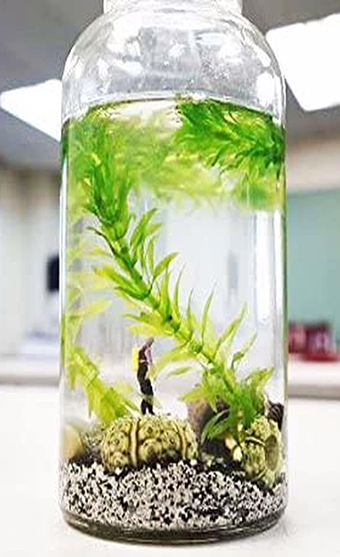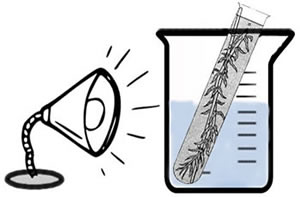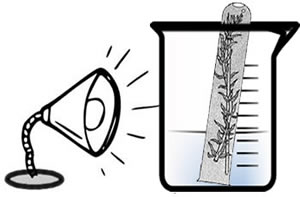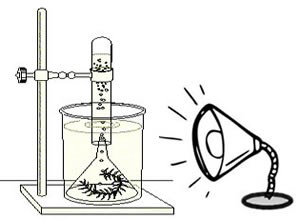Lab: Exploring the Rate of Photosynthesis

Photosynthesis is the process by which plants take carbon dioxide from the atmosphere, add water, and use the energy of sunlight to produce sugar.
Photosynthesis occurs in the chloroplast, an organelle in plant cells that
contains the molecule chlorophyll. Chlorophyll absorbs the energy of sunlight.
That light energy is converted to chemical energy through the steps of photosynthesis.
The reactions of photosynthesis can be divided into two major types: light-dependent reactions and light-independent reactions. The light-dependent reactions convert energy from the sun into a form that the chloroplast can then use to make sugar from carbon dioxide, in the process producing oxygen as a waste product. The light-independent reactions use that energy to make glucose from carbon dioxide and water.
Materials:
- Test tube
- Elodea cuttings
- Sodium bicarbonate (baking soda)
- Beaker with water
- Lamp with LED bulb
Part 1: Measurement of Photosynthesis
There are various set-ups that can be used to measure the rate of photosynthesis, each relies on counting the oxygen produced during the reaction. To improve results, add a pinch of baking soda to the water in the test tube. Cut elodea stems at an angle and use your fingers to crush the end of the stem. The water in the beaker is meant to absorb the heat from the light.
Design 1: Heat sinks (beaker with water) may not be necessary if using CFL bulbs. Count the bubbles to measure the rate of reaction

Design 2: The test tube can be inverted and the air pocket can be measured.

Design 3: A marker can be used to measure the amount of oxygen in the test tube rather than measuring bubbles.

If you do not see bubbles right away, re-cut and crush the stems, experiment with moving the light closer to the apparatus or remove the heat sink if using CFL bulbs. Your goal is to find a way to consistently measure the rate of photosynthesis using any of the designs above.
Part 2: Conditions for Photosynthesis
1. With the members of your group, brainstorm variables which may affect the rates of photosynthesis.
2. Form a hypothesis to test your variable.
3. Design an experiment to test your hypothesis. (check with instructor about available materials)
4. After discussing your plan with your instructor, perform your experiment.
5. Record all data and determine if your data supports or refutes your hypothesis.
Lab Report
Include the following sections in your lab report, which should be typed. You may also include photos of your experiment.
Introduction: Explain photosynthesis and include the chemical equation. Discuss the experimental set-up and how it can be used to measure the rate of photosynthesis.
Photosynthesis Experiment: Describe your experiment, include your hypothesis and data collected. Answer your experimental question or hypothesis by using your data to support or refute your claim (conclusion).
Conclusion: This section should summarize your overall findings and discuss any experimental errors or problems you encountered. This is also a good place to include any personal thoughts about your learning experience.
Other Resources on Photosynthesis
What Factors Affect Seed Germination – grow seedlings with different conditions (light, water, temperature)
Algae Beads and Photosynthesis – use algae cultures and sodium alginate, measure photosynthesis by changes in color of indicator
Photosynthesis and Plant Growth (virtual) – use a virtual app to show how plant growth changes in response to light color and light intensity
Leaf Transpiration – use leaves from trees to analyze how much water is lost when they are exposed to light
